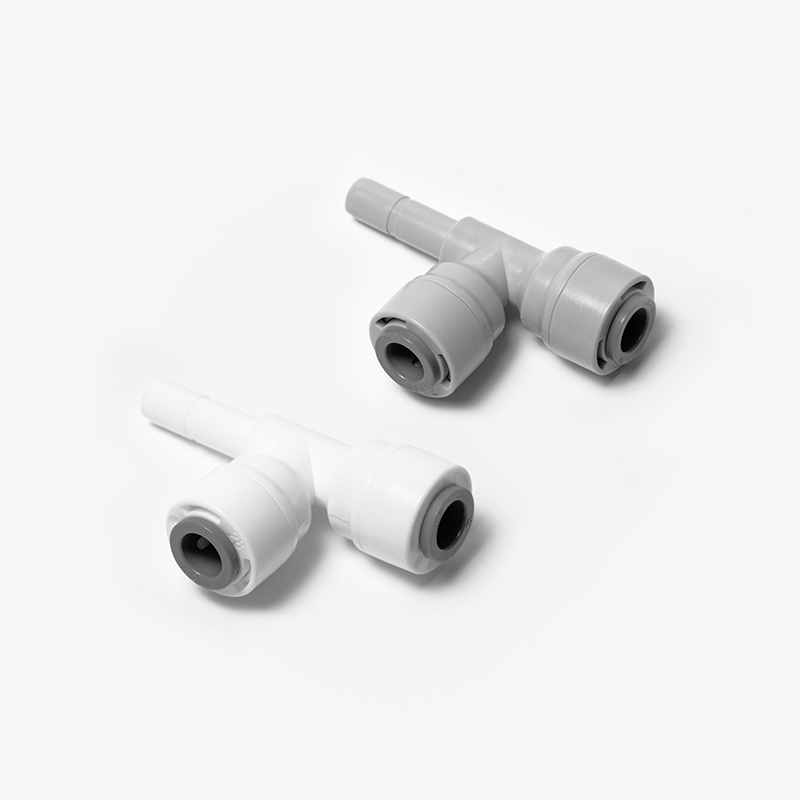Table of Contents
Removing Plastic Push Fit Connectors: A Step-by-Step Guide
Plastic push fit connectors are commonly used in various plumbing and DIY projects due to their ease of use and convenience. However, there may come a time when you need to remove these connectors for maintenance, repairs, or upgrades. In this step-by-step guide, we will walk you through the process of removing plastic push fit connectors effectively.
First and foremost, it is essential to gather all the necessary tools and materials before starting the removal process. You will need a pair of adjustable pliers or wrenches, a Utility Knife or pipe cutter, and a clean rag to wipe Down the area.
To begin, turn off the water supply to the area where the plastic push fit connectors are located. This step is crucial to prevent any leaks or spills during the removal process. Once the water supply is turned off, you can proceed to release any remaining pressure in the system by opening a faucet or valve.

Next, carefully examine the plastic push fit connector to identify the release collar. The release collar is typically a small plastic ring located near the end of the connector. Use your fingers to push the release collar towards the fitting while simultaneously pulling the pipe away from the connector. This action should release the grip of the connector, allowing you to remove the pipe easily.
If the connector is stubborn and does not release the pipe, you can use a pair of adjustable pliers or wrenches to gently twist and pull the pipe away from the connector. Be cautious not to apply too much force, as this may damage the connector or the pipe.
In some cases, you may need to cut the pipe to remove the plastic push fit connector. Use a utility knife or pipe cutter to carefully cut the pipe as close to the connector as possible. Once the pipe is cut, you should be able to remove the connector easily.
After removing the plastic push fit connector, inspect the pipe and connector for any signs of damage or wear. Replace any damaged components before reassembling the system to ensure a secure and leak-free connection.
Finally, once the connector has been removed, you can proceed with your maintenance, repairs, or upgrades as needed. Remember to follow the manufacturer’s guidelines when reinstalling the plastic push fit connectors to ensure proper installation and functionality.
In conclusion, removing plastic push fit connectors is a straightforward process that can be done with the right tools and techniques. By following the steps outlined in this guide, you can safely and effectively remove plastic push fit connectors from your plumbing or DIY projects.
The Environmental Impact of Plastic Push Fit Connectors: Alternatives and Sustainable Solutions
Plastic push fit connectors are commonly used in various applications, from plumbing to automotive industries, due to their ease of use and versatility. However, the environmental impact of these connectors is a growing concern as plastic waste continues to accumulate in landfills and oceans worldwide. In this article, we will explore the environmental implications of plastic push fit connectors and discuss alternative materials and sustainable solutions to reduce their negative impact on the Environment.
Plastic push fit connectors are typically made from non-biodegradable materials such as polypropylene or nylon, which can take hundreds of years to decompose. When these connectors are disposed of improperly, they contribute to the global plastic pollution crisis, harming wildlife and ecosystems. The production of plastic push fit connectors also involves the extraction of fossil fuels and the release of greenhouse gases, further exacerbating climate change.
To address these environmental concerns, it is essential to consider alternative materials for push fit connectors. One promising option is the use of biodegradable or compostable materials such as PLA (polylactic acid) or PHA (polyhydroxyalkanoates). These materials are derived from renewable resources like Corn Starch or sugarcane and break down more easily in composting facilities, reducing the overall environmental impact.
Another sustainable solution is to opt for metal push fit connectors, which are durable, long-lasting, and recyclable. Metal connectors, such as brass or Stainless Steel, offer a more eco-friendly alternative to plastic counterparts and can be reused or repurposed, reducing the demand for new materials and minimizing waste generation.
In addition to choosing alternative materials, proper disposal and Recycling of plastic push fit connectors are crucial for mitigating their environmental impact. Recycling facilities can process plastic connectors to extract valuable materials for reuse, reducing the need for virgin plastic production and lowering overall energy consumption and greenhouse gas emissions.
Furthermore, companies and manufacturers can play a significant role in promoting sustainability by implementing eco-friendly practices in their production processes. This includes using recycled materials, reducing packaging waste, and investing in Renewable Energy sources to minimize their carbon footprint.
| Model | Tube(a) | Stem(b) |
|---|---|---|
| 1801-A | 1/4 | 1/4 |
| 1801-C | 1/4 | 3/32 |
Consumers also have a part to play in reducing the environmental impact of plastic push fit connectors. By choosing products with minimal packaging, opting for reusable or recyclable connectors, and supporting companies that prioritize sustainability, individuals can contribute to a cleaner and healthier planet.
In conclusion, the environmental impact of plastic push fit connectors is a pressing issue that requires collective action from manufacturers, consumers, and policymakers. By exploring alternative materials, promoting recycling efforts, and advocating for sustainable practices, we can move towards a more environmentally conscious future where plastic waste is minimized, and our planet is preserved for future generations.
